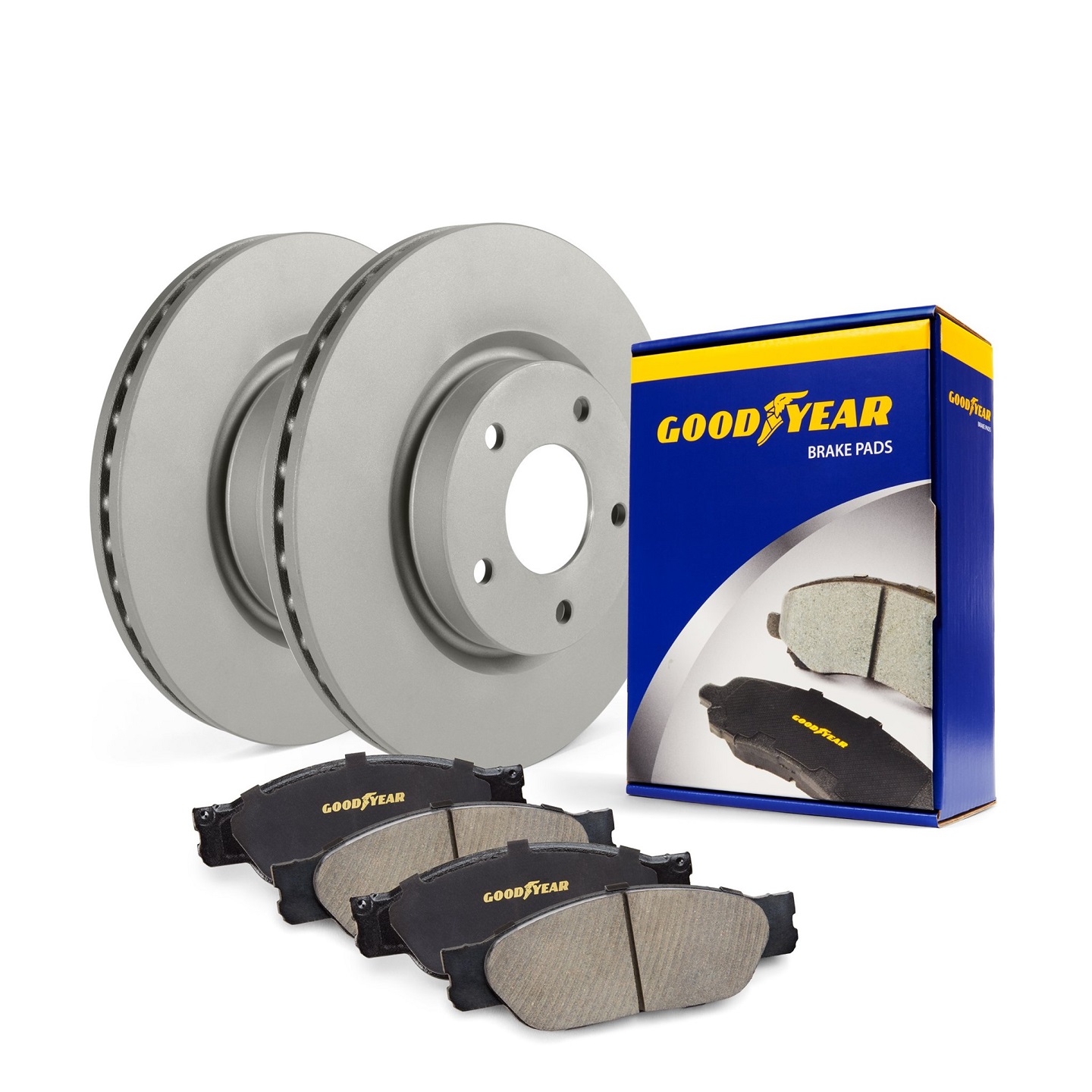Goodyear Brakes Guide Published – Stopping Car Rust & Drive in the Snow
Driving during the winter wreaks havoc on your car and the auto experts offer a guide on how to mitigate the effects of driving in the snow and preventing rust from building up on your brakes.

When rotating tires, many people discover that due to corrosion, the brakes and braking components need replacing before reaching their expected lifespan. Granular road salts or the popular liquid brine solutions of calcium chloride or magnesium chloride used on roads deteriorate brakes. These ice-melting aids wreak havoc on a car’s body, chassis, suspension and brakes through damaging rust and corrosion.
Download guide here: Prevent Rust During Winter Driving
The automotive experts at Goodyear Brakes offer some tips and solutions for assessing the health of vehicle braking systems and addressing the prevention of corrosion-related wear.
The new line of Goodyear Brakes provides premium quality brake kits, calipers, rotors, brake pads and all the hardware for today’s most popular vehicles, from daily drivers to SUVs and light trucks, all backed by a national warranty, decades of production experience and one of the best-known names in automotive excellence. The Goodyear Brakes product lineup offers the ideal solutions for almost every need including saving money on vehicle repairs, upgrading performance, and restoring the perfect car.
How Corrosion Can Damage the Braking System
Braking system corrosion can impede brakes’ function, seizing emergency (parking) brake cables and preventing normal, free movement of brake parts such as calipers and pads. As rust builds, it causes a phenomenon known as “rust jacking,” which can actually separate the pad’s friction material from the backing.
For those who live in areas that use salt and brine on the roads, there are several solutions, such as installing corrosion-resistant brake components like Goodyear Brakes rotors and calipers protected against rust and corrosion with their proprietary Antiox Max™ protective coating.
How to Help Keep Rust at Bay
Wash the vehicle as frequently and as soon as possible after a snow or ice storm. Go to an automatic car wash with an undercarriage wash, use the spray wand at a manual car wash or a pressure washer to direct water in all underbody nooks and crannies to flush away corrosion-causing salt and brine.
It may seem counter-intuitive, but parking the vehicle in a heated garage can actually accelerate brine and salt’s corrosive effects. Their corrosive effects are minimized at freezing temperatures, so parking outside when it’s too cold to wash the car may actually be better for it.
Lubricate all moving brake parts, such as the caliper pins, with a high-temperature ceramic or silicone brake lubricant (grease.) Apply the same lubricant to the back of each pad where the “ears” of the caliper contact it. Do not use wheel bearing grease, which could liquefy as it heats up and run onto braking surfaces.
How to Deal with Rust That’s Already Present
Rust sometimes causes brake pad friction material to separate from the backing, which means new brake pads. Inspect the rotors and calipers for corrosion damage, too. Inspect for rust where the rotor mounts to the hub. This can be removed with wire brushes, either by hand or mounted in a power tool, such as a drill.
How Goodyear Designs Help Prevent Corrosion
Many brake rotors and calipers from the original equipment manufacturer (OEM) - or available as replacements in the aftermarket - are bare metal and are susceptible to corrosion. That means not only is the service life shortened, but if the vehicle features an open wheel design, ugly rusty rotors and calipers show through. One option is to paint the rotors and calipers, but using hardware-store aerosol paints is time-consuming, can be tricky, and may not last until the next brake job.
There’s a better solution. Goodyear Brakes rotors and calipers are protected against rust and corrosion with their proprietary Antiox Max™ protective coating, a critical protection needed for driving in inclement weather and brine-treated streets. These products reduce the time spent cleaning off thick oil used in shipping, as some other brands do, or painting the non-braking surfaces.
Just give a quick spray of brake cleaner and a clean shop towel to wipe the light oil from the rotor or caliper. It is also worth noting that the entire Goodyear Brakes rotor, including the braking surface, is coated, but it will quickly wear in during the brake pad bedding-in process.
About Goodyear Brakes
Goodyear Brakes manufactures premium quality brake kits, calipers, rotors, brake pads and all the hardware required to successfully install brakes, all backed by a national warranty, decades of production experience and one of the best-known names in automotive excellence. The brake pads are manufactured in the USA using a proprietary green production process by a company with more than 50 years of experience in friction science. The Goodyear Brakes product line is available through GoodyearBrakes.com, Amazon, CarID, Walmart, and AutoAnything.com.
Goodyear (and Winged Foot Design) and Blimp Design are trademarks of The Goodyear Tire & Rubber Company used under license by FDP Virginia Inc., 1076 Airport Road, Tappahannock, VA 22560, USA. Copyright 2021 The Goodyear Tire & Rubber Company.
The Goodyear Tire & Rubber Company. Goodyear Brakes and FDP Virginia are not responsible for its products when they are subjected to improper applications installation or accident.

